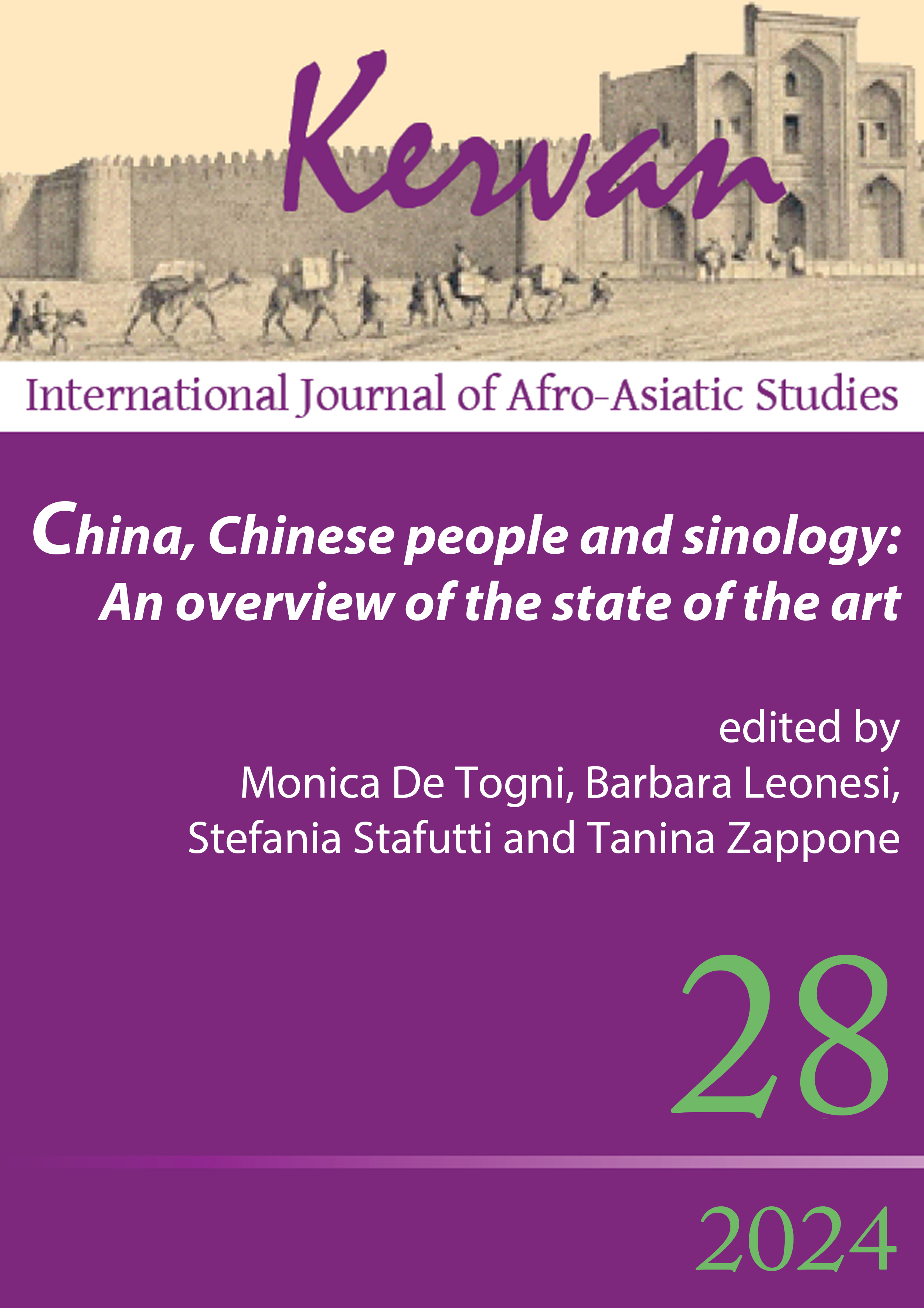Chinese descriptions of Sanskrit: The concept of ‘root’ and puruṣa nominal declension
DOI:
https://doi.org/10.13135/1825-263X/11612Abstract
The paper focus on two aspects: the acceptability of some previous interpretations of the term zìtǐ (字體) as 'word root' or 'word stem' in Chinese descriptions of Sanskrit lexemes; and the phonological analysis of the declension of puruṣa 'man', transcribed into Chinese characters by the monk Hui Li (慧立 , 629-665 A.D.). As will be seen, zìtǐ seems to refer to the description of Sanskrit words as they are composed in the writing system (by letter addition), rather than to their grammatical structure. With regard to the declension of puruṣa, it appears that the phonetic reconstructions proposed by Pulleyblank (1991) for the Middle Chinese pronunciation of the characters employed seem to be accurate with respect to the corresponding Sanskrit syllables.
Downloads
Downloads
Published
Issue
Section
License
Gli autori che pubblicano su Kervan accettano le seguenti condizioni:
- Gli autori mantengono i diritti sulla loro opera e cedono alla rivista il diritto di prima pubblicazione dell'opera, contemporaneamente licenziata sotto una Licenza Creative Commons - Attribuzione che permette ad altri di condividere l'opera indicando la paternità intellettuale e la prima pubblicazione su questa rivista.
- Gli autori possono aderire ad altri accordi di licenza non esclusiva per la distribuzione della versione dell'opera pubblicata (es. depositarla in un archivio istituzionale o pubblicarla in una monografia), a patto di indicare che la prima pubblicazione è avvenuta su questa rivista.


 The articles that have appeared on Kervan since 2016 are rated as Class A in the system of National Scientific Qualification (ASN, disciplines 10/N1 and 10/N3).
The articles that have appeared on Kervan since 2016 are rated as Class A in the system of National Scientific Qualification (ASN, disciplines 10/N1 and 10/N3). The journal has been approved for inclusion in DOAJ. The DOAJ listing of the journal is available at
The journal has been approved for inclusion in DOAJ. The DOAJ listing of the journal is available at  The journal has been approved for inclusion in ERIH PLUS. The ERIH PLUS listing of the journal is available at
The journal has been approved for inclusion in ERIH PLUS. The ERIH PLUS listing of the journal is available at  Kervan was just accepted for indexing in SCOPUS. This important milestone ensures that articles published in Kervan are easily found when searching for library, archives and Information science and it enables Kervan authors to keep track of how often their article has been cited by others.
Kervan was just accepted for indexing in SCOPUS. This important milestone ensures that articles published in Kervan are easily found when searching for library, archives and Information science and it enables Kervan authors to keep track of how often their article has been cited by others.

